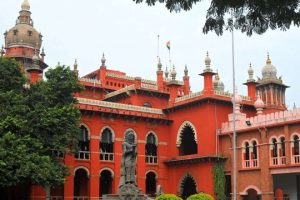INTRODUCTION
These stone crushers though socio-economically an important sector, give rise to a substantial quantity of fine fugitive dust emissions which create health hazards to the workers as well as the surrounding population by way of causing respiratory diseases. The dust also adversely affects visibility, reduces the growth of vegetation and hampers the aesthetics of the area. To prevent/control these emissions, CPCB has already evolved Emission Standards and guidelines in 1989, which has been notified under the Environment (Protection) Act, 1986 by the Ministry of Environment & Forests vide Notification No. G.S.R. 742(E) dated 30th August 1990 & S.O. 8(E) dated December 31, 1990, based on techno-economic feasibility to achieve the standards.
But over the years, as the need for more effective control and enforcement has been felt and to provide more specific guidelines to Comprehensive Industry Document on Stone Crushers the stone crushers to enable them to control emissions satisfactorily.
Digging deep into the issue of illegal mining in riverbeds, the Bench of Chief Justice Ravi Shanker Jha and Justice Arun Palli made it clear the order “However, it is made clear that this court has not prohibited the state authorities from permitting mining activities, in accordance with the law” the Bench added. Alleging illegal mining in Pathankot, Hoshiarpur and Gurdaspur districts, petitioner Karan Singh through counsel Saurav Bhatia was seeking directions for a thorough probe and a complete halt on illegal mining.
A bench headed by NGT chairperson Justice A.K. Goel was also hearing an original application filed by Bachitter Singh (appellant) against the illegal operation of stone crushers in Roopnagar District Punjab. On submissions being made by the Counsel, the green panel observed that illegal mining is going on at a huge level to the tune of more than one crore metric tonnes of the value of more than Rs 600crores.
ISSUE
This matter was considered before on 06.08.2020 by the joint Committee showing that there was a huge gap in the raw material used and the raw material accounted for by the stone crushers from whom it could be inferred unaccounted raw material was sourced from illegal mining. No Environmental Clearance (EC) has been taken by the owners of stone crushers.
National Green Tribunal Observation
- NGT stated that “stone crushers are not covered under the ambit of EIA and thus not required to obtain Environment Clearance (EC)”.
- The Tribunal said that it is mandatory on the part of the owner of the stone crushers to seek permission to establish or operate under the Water (Prevention and Control of Pollution) Act, 1974 and Air (Prevention and Control of Pollution) Act, 1981 and also as per policy guidelines from State Pollution Control Board (PCB).
- This should be an eye-opener for the authorities in the State of Punjab but it seems that no attention is being paid to the same. There is a clear need for continuous evaluation and remedial action. It appears that stand-alone stone crushers have been allowed, without permission for mining, possibly to avoid the requirement of Environmental Clearance but, on the ground, mining is taking place to feed such stone crushers. “Establishment of such stone crushers is thus against the spirit of the requirement of Environmental Clearance.”
Case laws
M.C. Mehta v. Union of India 2004 (Delhi Ridge Case)
The mining activity in an area up to 5 km from the Delhi-Haryana border on the Haryana side of the ridge and also in the Aravalli hills causes environmental degradation. The Court held that the mining operations are hazardous to nature and relied on the T.N. Godavarman case to note that a balance has to be struck between development and environment protection.
The court also relied on Principle 15 of the Rio Conference of 1992 relating to the applicability of precautionary principle which stipulates that where there are threats of serious or irreversible damage, lack of full scientific certainty shall not be used as a reason for proposing effective measures to prevent environmental degradation is also required to be kept in view. And the court further said that violation of any of the conditions would entail the risk of cancellation of mining lease. The mining activity shall continue only in strict compliance with the stipulated conditions.
Ecological Impacts of Mining
- Removal of all vegetation (flora) and thereby fauna from the area required for mining and other purposes.
- Pollution of water in the surrounding water bodies due to leaching from overburden dumps and due to the pollutants from the other activities. This affects the aquatic ecology of these water bodies.
- Dust in the atmosphere, contributed by mining and associated activities, when deposited on the leaves of the plants in the surrounding areas may retard their growth.
Conclusion
Mining and associated activities have considerable impacts on the ecology of the mining and the surrounding areas. These impacts are evident in most of the mining complexes in the country. Damage to Environment has severely reduced the level of groundwater.
The stone crusher is one such industry that exists in the vicinity of almost all major cities/towns throughout the country in all the states because the construction activities go on throughout the country. As transportation of stone over long distances adds to the cost of the crushed stone products, the crushers need to be necessarily located nearer to the demand centres such as Cities, Bridges, Canals etc. Stone Crushers also need an electricity supply and a large number of manpower for their operation. It also needs access roads for the movement of mined stone as well as crushed stone products. It is for this reason that most Stone Crushers are located along the periphery of Cities or in the vicinity of major construction projects. The crushers are located nearer to the source of raw material such as Stone mines, River Beds etc.
Punjab Chief Minister Amarinder Singh in March 2021 announced the constitution of an Enforcement Directorate to “completely eliminate the scourge of illegal mining” from the state. He said the ED (Mining) will be under a senior police officer with adequate police force at his command.
AUTHOR: Shalvi Chauhan, Intern Indian Law Watch (April-May 2021); Pursuing B.A.L.L.B from Ideal Institute of Management and Technology and School of law(IPU); 2nd year







 Karnataka High Court Directions on Strict Implementation of the COVID-19 Preventive Measures to the Government
Karnataka High Court Directions on Strict Implementation of the COVID-19 Preventive Measures to the Government





It is a great article. Thank you for your thorough research and clear writing.
It is a great article.